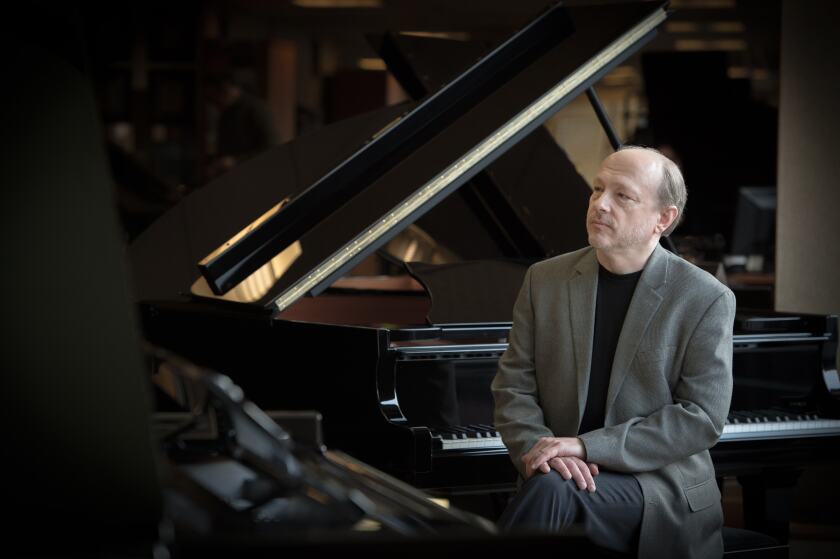
REVIEW: At SummerFest, performance of Dvorák’s Piano Trio an unforgettable experience
Christian Hertzog
August 15, 2022
The theme of this year’s La Jolla Music Society SummerFest is “Under the Influence.” It wasn’t entirely clear how Friday’s concert at Baker-Baum Concert Hall, “The New Romantics,” illustrated that theme.
The Dover Quartet played Schubert’s “Quartettsatz” and was then joined by pianist Marc-André Hamelin for the world premiere of his complete Piano Quintet. Dvorák’s Piano Trio in F Minor, Op. 65 completed the program.
Written in 1820, “Quartettsatz” (“Quartet Movement”) certainly qualifies as an early Romantic composition. The Dover Quartet — Joel Link, Bryan Lee, violins; Milena Pajaro-Van De Stadt, viola; and Camden Shaw, cello — gave it a passionate and technically excellent performance, with Link’s dramatic violin work a driving force.
Dvorák composed his Piano Trio in 1883. Impressionism and Post-Romanticism were just around the corner, even as Brahms, Dvorák, and Tchaikovsky continued to work within the harmonies and forms of the earlier Romantic era. I don’t hear anything “new” about it.
However, Dvorák’s Trio was obviously under the influence of Brahms. The rhetorical fervor and careful construction of the Trio would be at home in Brahms’ catalog, not to mention some of the themes actually sounding Brahmsian.
The Trio was given a heartfelt performance by violinist Stefan Jackiw, cellist Clive Greensmith and pianist (and SummerFest director) Inon Barnatan. Jackiw and Greensmith were well-matched in tone, especially during moments such as the opening of the slow movement, where the theme passed from cello to violin, and then harmonized with the cello.
Barnatan’s extravagant rubato was appropriate for this work. The intensity from all three players in the first movement was so great that its ending provoked spontaneous applause. Their consummate musicality throughout the entire work made this an unforgettable experience.

Hamelin is a pianist’s pianist whose performances are always worth hearing. He mentioned the influence of Liszt and Wagner on his Piano Quintet, but that doesn’t really describe the overly saturated harmonies of this work. It sounds as if it might have been composed in the 1910s or 1920s by a Post-Romantic without fear of crunchy dissonances, but underneath it all, still tonal. That I can’t quite put a finger on who it sounds like suggests that Hamelin has carved out his own niche.
The piano part of his Quintet is extremely florid. There’s almost always rapid motion, even when the string quartet is proceeding at a slower harmonic pace. The excessive figuration of Hamelin’s part seems like a perverse joke on the chamber music truism that piano parts are always much more difficult than what their string-playing colleagues deal with.
The Dover Quartet imbued Hamelin’s work with the same passion they brought to Schubert. Hamelin was his usual superhuman self.
Sometimes I really don’t know how to judge a new work. This was one of those times. Had I the benefit of repeat hearings, I would have more justification for an opinion. There’s something inherently odd in a composer traveling so far back in time. I can’t deny that Hamelin wrote an effective work, and considering the audience’s enthusiastic applause, their opinion was much more decisive than mine.
At a concert prelude, Tessa Lark gave a brief solo recital of what she calls “Stradgrass” — playing bluegrass on an expensive violin, as well as classical repertory with similar morphology, the latter illustrated by the “Preludio” to Bach’s E Major Partita, a Telemann jig, and the finale to Ysaye’s Sonata No. 4. Classical met bluegrass head-on in John Corigliano’s “Stomp,” a rowdy merger of fiddling and 20th-century harmonies. She was an engaging violinist with a truckload of technique. I look forward to her upcoming CD.
Hertzog is a freelance writer.